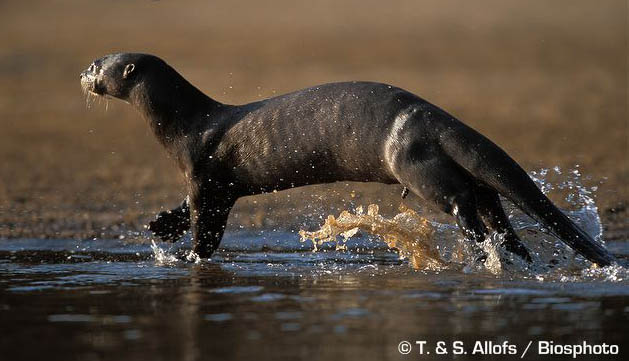Here's a quick peek at these otters!
Neotropical Otters (Lontra longicaudis) look very similar to North American River Otters and Southern River Otters. They get their *species name* (longicaudus which literally means *long tail*) from their looong tails! Their tail is over a third of their total body length.
They live in a wide range of habitats, from forested stream, lakes, temporary to permanent swamps/marshes, to marine environments. The Neotropical otter lives across most of Central and South America, from northern/central Mexico down to southern Argentina (primarily excluding Baja Mexico and northern Mexico *and* most of the western coast of South America).
Neotropicals are elusive (and rarely seen) and aren't generally social with each other, with the apparent exception being females with their cubs.
Neotropical otters, listed as "Near Threatened" by IUCN RedList, are considered to be at risk in some sections of it's range due to habitat degradation (due to pollution and habitat destruction)
The Southern River Otter (Lontra provocax), or South American River Otter, is found only in western Argentina and southern Chile. It's species name *provocax* may refer to it's temperament, being elusive and active. Through most of it's range it's found in freshwater; in parts of Chile though it also uses marine environments.
Females will live in family groups with their offspring, but adult males tend to be solitary.
Southern river otters are considerably smaller than Neotropical otters; growing up to ~48"(1.2m) long and weighing up to ~22 lbs (10 kg).
They are listed as "Endangered" by IUCN RedList. The population is really struggling, and is unfortunately expected to decline by over 50%, due to habitat destruction and human disturbance, over the next 30 years.
The Marine Otter (Lontra felina), also known as the Sea Cat (*felina* means *cat*), is found along the western coast of South America, from Peru south to the southern tip of Chile and across to Argentina. They live in marine environments.
Very little is known about these otters. Sometimes they're seen alone, sometimes in small groups. Offspring are seen with both parents for about the first 10 months, it's currently believed that the parents are monogamous.
The mothers are sometimes seen carrying young on their bellies, like sea otters.
Marine otters are the smallest marine mammal and second smallest of all of the otters, being up to ~ 44" (1.15 m) long and ~12 lbs (5 kg).
They are listed as "Endangered" by IUCN RedList.
Phylogenetic Tree of Otters























